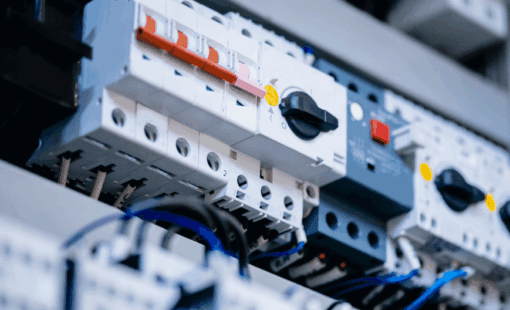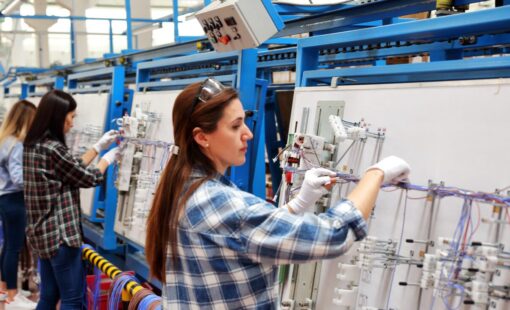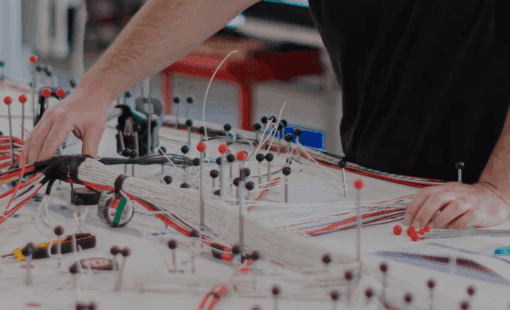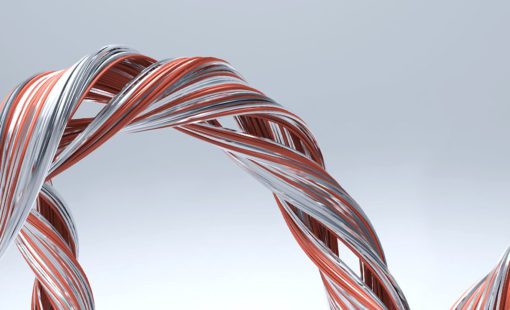1:1 drawings of wire harnesses continue to be created mainly by wiring harness engineers at the wiring harness supplier. But this approach has a latent risk for delays and errors.
Every manufacturer faces a fundamental decision—whether to make or buy subsystems for an assembled product, such as a vehicle, a production machine, or a consumer product. In the context of lean manufacturing in general, and in within wire harness manufacturing in particular, the preference often leans towards “buying” an assembled wire harness from a specialist supplier. These experts possess the knowledge to select suitable components and have the equipment necessary to manufacture and assemble subsystems, ranging from wire bundles and wire harnesses to connector plugs.
When manufacturers opt to “buy” wire harnesses, the OEM’s electrical engineering department typically focuses on creating an unscaled logic design on their chosen ECAD system. They then hand this design over, along with dimensioning information obtained from the MCAD department, to the chosen wire harness manufacturer. Manufacturing engineers take charge of specifying the components, connectors, shielding, and bundling details. They consolidate this information into 1:1 drawings, which guide manual assembly on manufacturing or formboards.
Challenges of Manual Data Re-entry in Wire Harness Manufacturing
Traditional wire harness design follows this approach, benefiting from the expertise of specialist suppliers and capitalizing on economies of scale. However, this approach unavoidably leads to extended lead times due to manual data re-entry and the consolidation of dimensioning information from MCAD sources. Even more critically, it introduces the risk of misinterpretation, errors, and subsequent delays and unexpected costs inherent in manual data re-entry processes.
To mitigate these risks, proven remedies emphasize front-loading critical design decisions within a single-source-of-truth design environment and establishing digital continuity between systems and wire harness engineers.
Preventing Errors: The Role of Front-loading
Instead of relying on a patchwork of standalone applications for schematic design and physical harness design in a federated manner, Zuken chose a different approach. They built applications for all stages of wire harness (and control cabinet!) design on a single, robust foundation provided by their powerful schematic application, E3.schematic. E3.schematic, along with its databases, serves as the operational backbone for all subsequent design stages. This includes specifying the physical characteristics of wires, bundles, connectors, and other components in E3.cable, as well as creating 1:1 manufacturing drawings in E3.formboard. These applications incorporate automatic dimensioning and logic-checking routines to minimize errors.
Seamless Data Exchange with Mechanical Engineering
Furthermore, to enable bidirectional information exchange between electrical engineering in E3.series and the MCAD world, Zuken introduced the dedicated application E3.3DRoutingBridge. This extension to E3.cable empowers electrical engineers to transfer connection, component, pin, and splice information from E3.series to all major MCAD systems. This facilitates bending radius checks and collision checks, enhancing accuracy. The consolidated segment and wire-length information can then be transferred back to E3.series, where E3.formboard, a dedicated application for creating detailed 1:1 manufacturing drawings, is available.
E3.formboard offers a comprehensive solution for generating cable harness drawings for manufacturing. It allows the creation of sheets of any size on one or more manufacturing drawings. Automatic functionality simplifies the placement, arrangement, and dimensioning of the harness and its segments. E3.formboard seamlessly integrates with E3.cable, ensuring that the logical interconnection data defined in E3.cable is used directly in E3.formboard. Any changes made in either application are automatically reflected in the other, ensuring synchronization throughout the design stages.
Creating Comprehensive Manufacturing Data with E3.series Designs
Formboard designs encompass connection tables, clips, heat shrink, and convolute. E3.formboard automatically determines wire lengths, and a packing algorithm calculates the outside diameter of the harness segments. The wire harness branches can be rotated about any point, allowing fitment to most paper sizes.
Additionally, E3.formboard offers a dedicated print functionality that allows individual sections to be printed. Connectors added to the harness sheet automatically include connection tables, while connecting lines added between the connectors define the branches of the wiring harness. Wires added to the terminals in the connection tables can be automatically routed through the shortest or pre-defined harness segments.
Exploring the Additional Benefits of E3.series in Wire Harness Design
With these comprehensive capabilities, E3.series empowers OEMs and their electrical engineers to create and provide complete and comprehensive manufacturing information to wire harness manufacturers. This not only saves time previously required for manual data entry but also prevents unexpected costs due to dimensioning errors.
Moreover, controlling the full manufacturing specifications of their wire harness designs opens the opportunity to request and compare quotations from several manufacturers, ultimately reducing the cost of one of the most expensive supplier components in the industry—wire harness manufacturing.






